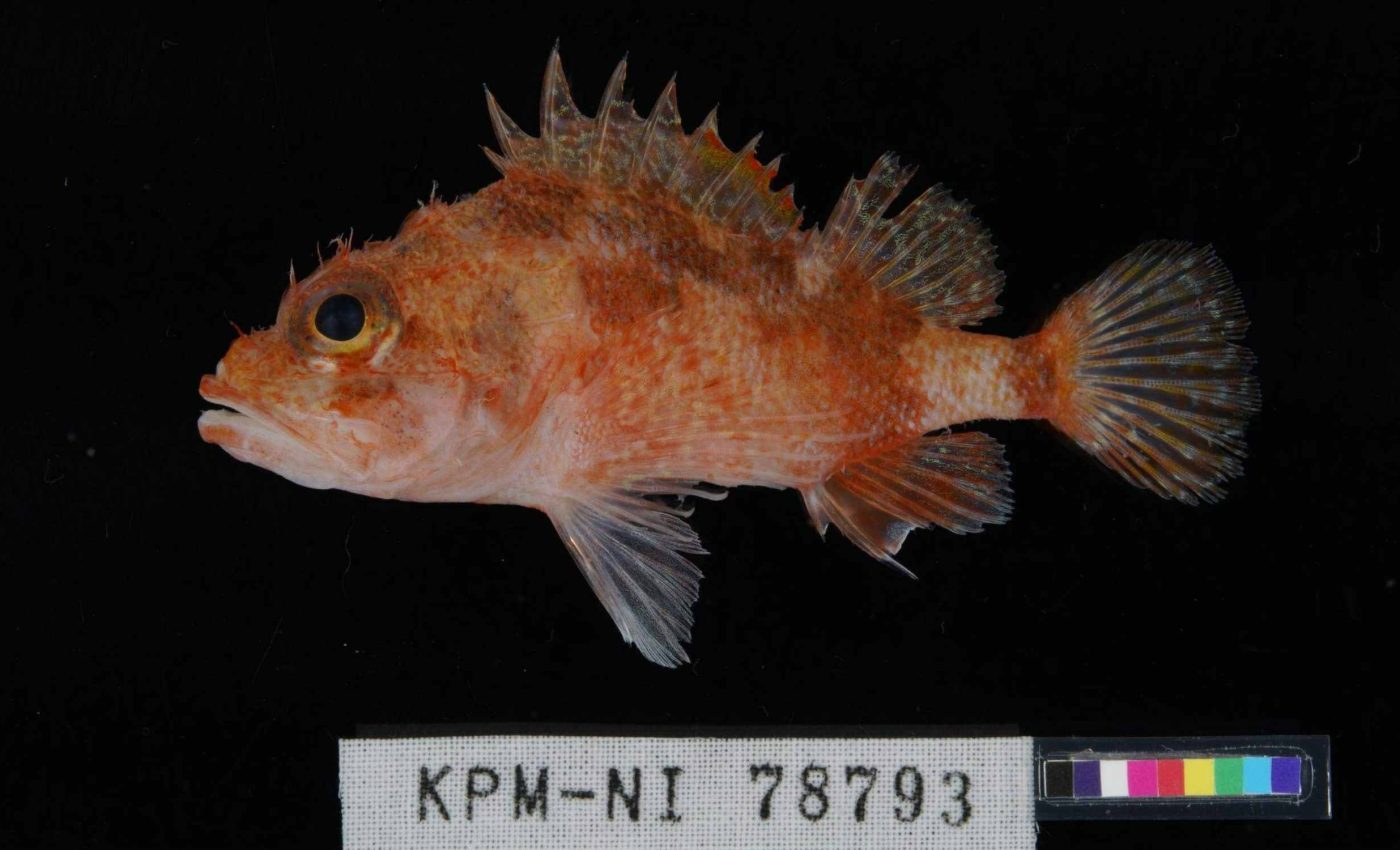
Team discovers a new poisonous fish with spines and bright orange coloring
A small venomous scorpionfish new to science, Phenacoscorpius trispinis, was recently discovered in Sagami Bay, Japan. It was hauled from about 525 feet during a routine line catch near Hayama.
The species carries stiff fin spines and a compact body built for ambush. Its head armor and cheek spines mark it as different from known relatives.
Bright orange scorpionfish
Phenacoscorpius trispinis is known in English as the noslit scorpionfish. The common name points to a missing slit behind the last gill arch, a useful trait for telling it apart.
The work was led by Tatsuya Matsumoto, an ichthyologist, at The Kagoshima University Museum. His research focuses on fish systematics and the traits that separate closely related species.
It was collected on rocky bottom in Sagami Bay, a deep inlet on Japan’s east coast. The single museum specimen measures about 2.5 inches long.
The fish belongs to a deep water group of scorpionfish that often live on boulder fields. Many features, including counts of fin rays and head spines, help taxonomists compare species.
Classifying Phenacoscorpius trispinis
The formal description compares bones, spines, and counts across the genus Phenacoscorpius. It focuses on measurements that stay stable as fish grow.
The researchers described the fish’s body and head as bright orange, marked with irregular blackish blotches along the cheek.
“The species name ‘trispinis’ is a combination of Latin, ‘tri’ and ‘spinis’,” wrote Tatsuya Matsumoto. The name refers to three cheek spines on the lacrimal bone, a small bone near the eye that carries part of the cheek armor.
Another key feature is the missing slit behind the last gill arch, which supports the noslit nickname. The fish also shows 16 or 17 pectoral fin rays and three stiff spines on the anal fin.
Adapting to life on the seafloor
The noslit scorpionfish lives among rocky slopes where light barely reaches. Its bright orange color may appear muted at depth, helping it blend into the dim background.
Like other bottom dwellers, it spends much of its time resting motionless, waiting for small crustaceans or fish to pass close enough to swallow whole.
This ambush feeding strategy, a hunting method based on surprise rather than pursuit, allows it to conserve energy in low-food environments.
Phenacoscorpius trispinis venom
Scorpionfish like Phenacoscorpius trispinis carry fin spines that inject potent venom. They defend themselves by raising those spines when threatened.
Venomous means the animal delivers toxin by a spine or bite. It does not mean the flesh itself is poisonous if touched.
Lionfish are scorpionfish that have spread through parts of the Atlantic and Gulf of Mexico. Their success shows how quickly members of this family can reshape reef food webs when moved to new places.
The noslit scorpionfish is a native deep water species from Japan, not an invader. Even so, careful identification helps avoid accidental spread and protects local biodiversity.
From the deep to the family tree
The holotype, the single specimen that defines the species, came up from a rocky slope near Hayama. It anchored the name and measurements in a public collection.
To check identity, the team sequenced 534 base pairs of a mitochondrial gene called cytochrome c oxidase subunit I. That gene is a standard barcode used widely to sort fish species.
The resulting phylogenetic tree, a diagram of evolutionary relationships, separated the new species from its closest relatives. Genetic distances to two near neighbors were 3.2 percent and 4.0 percent.
A near match in public databases suggests the species may also live near Taiwan. The authors include that area in the likely range based on the DNA record.
Phenacoscorpius trispinis questions
This description is based on one specimen, which is common for deep water discoveries. More finds will pin down natural variation in fin rays, body depth, and head spines.
Some scorpionfish show occasional differences in dorsal soft rays. The authors note that this trait should not be used alone for identification.
Anglers and research vessels working in Sagami Bay can help by preserving unusual catches and recording depth and bottom type. Rocky ledges in the 500 to 600 foot range are good places to search.
Each new species improves field guides, fishery records, and conservation plans. Clear names and measurements reduce misidentifications in science and seafood markets.
The study is published in Ichthyological Research.
—–
Like what you read? Subscribe to our newsletter for engaging articles, exclusive content, and the latest updates.
Check us out on EarthSnap, a free app brought to you by Eric Ralls and Earth.com.
—–













